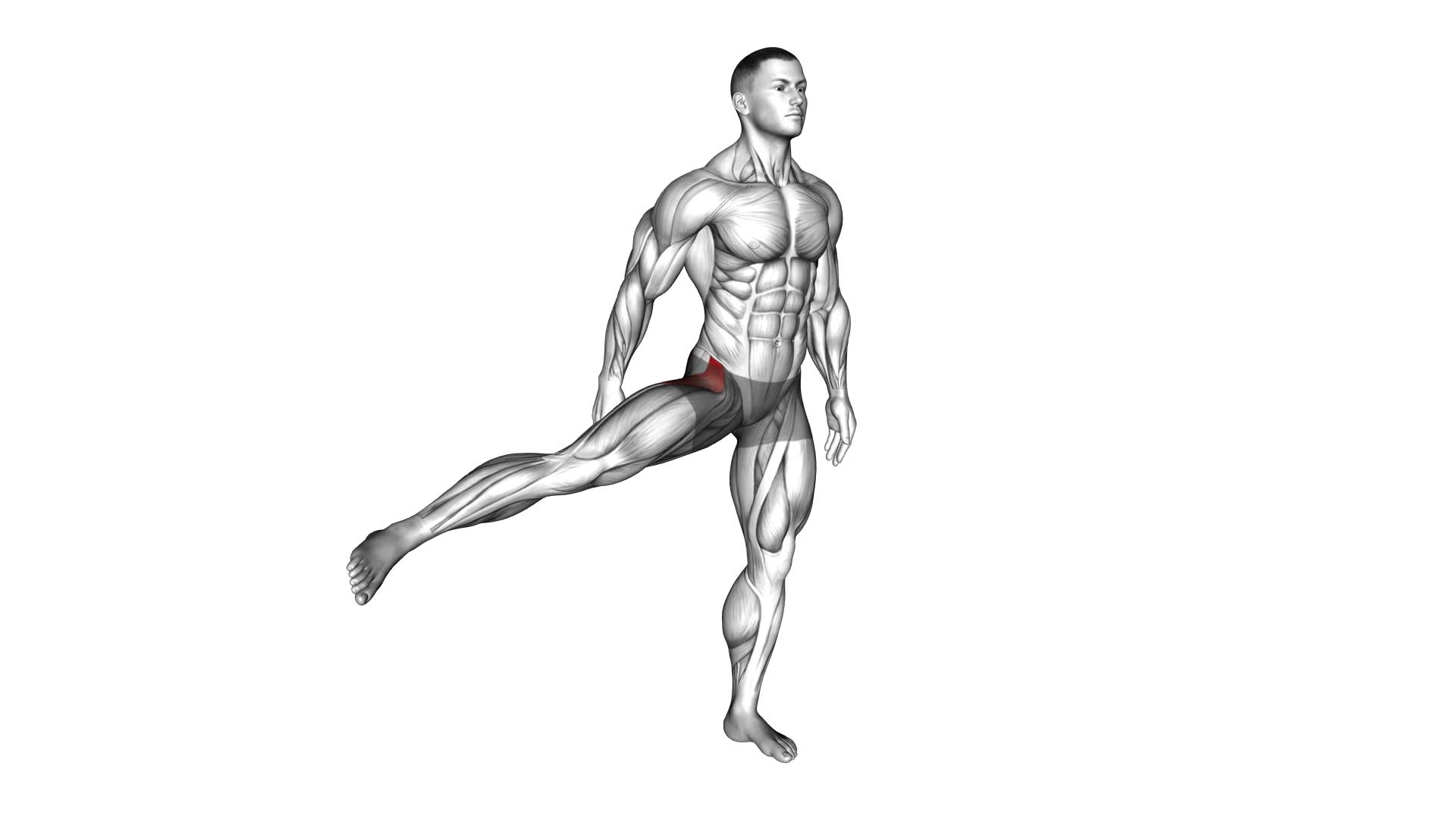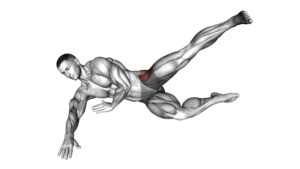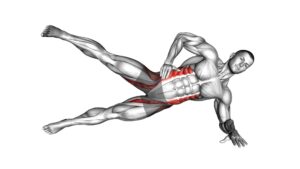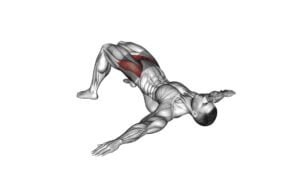Hip Abduction – Video Exercise Guide & Tips

Are you looking to strengthen your hip muscles and improve your overall lower body strength? Look no further!
Watch This Exercise Video
In this video exercise guide, we'll provide you with all the tips and techniques you need for effective hip abduction workouts.
With the help of detailed instructional videos, you'll learn how to perform the exercises with proper form and avoid common mistakes.
Get ready to take your hip abduction workouts to the next level!
Key Takeaways
- Hip abduction exercises can increase hip strength, stability, and reduce the risk of injury.
- Incorporating hip abduction exercises into a routine can enhance athletic performance and improve posture.
- Proper form and technique are important in hip abduction exercises to maximize their effectiveness and avoid common mistakes.
- Gradually increasing resistance and progressing at a comfortable pace can lead to growth and strength development in the hip abductor muscles.
Benefits of Hip Abduction Exercises
You can experience numerous benefits by incorporating hip abduction exercises into your fitness routine. These exercises target the muscles in your hips and thighs, helping to improve your overall lower body strength and stability. One of the key benefits of hip abduction exercises is that they can be easily modified to suit your fitness level and goals. Whether you're a beginner or an advanced exerciser, there are exercise modifications available that allow you to gradually increase the intensity of your workout.
Hip abduction exercises also offer a variety of progression options. As you become stronger and more comfortable with the basic movements, you can advance to more challenging variations. This helps to keep your workouts interesting and prevents plateauing. Additionally, hip abduction exercises can improve your balance and coordination. By engaging the muscles in your hips and thighs, you're enhancing your ability to stabilize your body during movement. This can be particularly beneficial for athletes and individuals who participate in sports that require agility and quick changes in direction.
Incorporating hip abduction exercises into your routine can also help to prevent injuries. By strengthening the muscles in your hips, you're providing additional support to the joints in that area, reducing the risk of strains and sprains. This is especially important for individuals who engage in activities that involve repetitive hip movements, such as running or cycling.
Equipment Needed for Hip Abduction Workouts
When it comes to hip abduction workouts, having the right equipment is essential for an effective and safe workout. There are affordable options available for those on a budget, such as resistance bands or ankle weights, which can provide the necessary resistance for targeting the hip muscles.
Additionally, if you don't have access to specific abduction equipment, there are alternative exercises that can still work the same muscles without the need for expensive equipment.
Essential Equipment for Abduction
To perform effective hip abduction workouts, you'll need specific equipment. Here are some abduction equipment options and cost-effective alternatives to consider:
- Resistance Bands: These versatile bands provide resistance during hip abduction exercises. They come in different resistance levels and are portable, making them a convenient option for home workouts.
- Ankle Weights: Ankle weights add resistance to your hip abduction exercises, allowing you to challenge your muscles further. They're adjustable and can be worn during various exercises, providing an effective workout for your hip muscles.
- Cable Machines: Cable machines offer a wide range of resistance options and provide a smooth and controlled movement during hip abduction exercises. They're commonly found in gyms and provide targeted training for your hip muscles.
Affordable Options for Abduction
For affordable options, consider using resistance bands, ankle weights, or cable machines for your hip abduction workouts. These budget-friendly alternatives can provide effective resistance and help strengthen your hip muscles without breaking the bank.
Resistance bands are versatile and come in different levels of resistance, allowing you to gradually increase the intensity of your workouts as you progress.
Ankle weights are another affordable option that can be easily strapped onto your ankles to add resistance to your hip abduction exercises. They come in various weights, so you can choose the one that suits your fitness level.
Cable machines are also worth considering, as they offer adjustable resistance and provide a smooth and controlled movement for your hip abduction exercises.
These affordable options are convenient, effective, and can help you achieve your hip abduction goals without straining your budget.
Alternatives to Expensive Equipment
If you're looking for affordable alternatives to expensive equipment for your hip abduction workouts, consider these options:
- Resistance Bands: Resistance bands are a versatile and cost-effective tool that can be used for a variety of exercises, including hip abduction. These bands come in different levels of resistance, allowing you to gradually increase the intensity of your workouts as you get stronger. They're lightweight and portable, making them perfect for home workouts.
- DIY Equipment: If you're on a tight budget, you can get creative and make your own equipment for hip abduction exercises. For example, you can use household items like towels or pillows to create resistance and work your hip muscles. You can also use a sturdy chair or bench for support while performing standing or seated hip abduction exercises.
- Bodyweight Exercises: Don't underestimate the power of your own bodyweight. There are several bodyweight exercises that target the hip muscles, such as standing leg lifts or side lunges. These exercises can be done anywhere, without the need for any equipment.
By incorporating these affordable alternatives into your home workout routine, you can effectively strengthen and tone your hip muscles without breaking the bank.
Now, let's move on to the next section to learn about proper form and technique for hip abduction.
Proper Form and Technique for Hip Abduction
To perform hip abduction exercises with proper form and technique, there are a few key points to keep in mind.
First, focus on muscle activation cues, such as engaging your glutes and outer thighs throughout the movement.
Second, be aware of common mistakes to avoid, such as using momentum or lifting your legs too high.
Muscle Activation Cues
First, engage your core and maintain a neutral spine while performing hip abduction exercises. This will help stabilize your body and prevent any unnecessary strain on your lower back.
To maximize muscle activation during hip abduction, follow these techniques:
- Focus on the target muscles: Concentrate on using your gluteus medius and minimus muscles to perform the movement. This will ensure that these muscles are activated and working effectively.
- Control the movement: Slowly lift your leg out to the side, keeping it in line with your body. Avoid any swinging or jerking motions, as this can reduce muscle activation.
- Use progressive overload: Start with lighter resistance and gradually increase the load as you get stronger. This will help you progress and continually challenge your muscles during hip abduction exercises.
Common Mistakes to Avoid
Maintain proper form and technique to avoid common mistakes during hip abduction exercises.
One common mistake to avoid isn't using proper breathing techniques. It's important to exhale as you lift your leg out to the side and inhale as you bring it back down. This helps to engage the core muscles and maintain stability throughout the exercise.
Another mistake to watch out for is using too much weight or resistance, especially for beginners. It's important to start with lighter weights or resistance bands and gradually increase as your strength improves.
Additionally, make sure to keep your hips and pelvis stable throughout the exercise, avoiding any excessive rocking or tilting.
Benefits of Hip Abduction
Experience the numerous benefits of hip abduction exercises by mastering proper form and technique. By incorporating hip abduction exercises into your workout routine, you can strengthen your hip muscles and improve overall lower body stability and balance.
Here are three key benefits of performing hip abduction exercises:
- Increased hip strength: Hip abduction exercises specifically target the muscles responsible for moving the leg away from the midline of the body, such as the gluteus medius and minimus. Strengthening these muscles can lead to improved hip stability and reduced risk of injury.
- Enhanced athletic performance: Strong hip muscles are essential for athletes in various sports, including running, jumping, and changing direction. By incorporating hip abduction exercises, you can increase your power, speed, and agility, ultimately improving your performance.
- Improved posture and alignment: Weak hip muscles can contribute to poor posture and misalignment, leading to potential issues such as lower back pain. Hip abduction exercises help to strengthen these muscles, promoting better posture and alignment.
Incorporating hip abduction exercises into your routine can have numerous benefits for strengthening your hip muscles and improving overall lower body stability and balance.
Don't miss out on the opportunity to enhance your athletic performance and improve your posture by mastering proper form and technique in hip abduction exercises.
Variations of Hip Abduction Exercises
To effectively target your hip abductor muscles, you should frequently incorporate various exercises that challenge your range of motion and strengthen your hips. By incorporating different hip abduction variations into your workout routine, you can ensure thorough engagement of your hip abductors from different angles. This not only helps to prevent muscle imbalances but also promotes overall hip stability and functionality.
One effective variation of hip abduction exercises is the side-lying hip abduction. To perform this exercise, lie on your side with your legs stacked on top of each other. Keeping your top leg straight, lift it up as high as you can while maintaining control. Slowly lower it back down to the starting position. This exercise targets the outer hip muscles and can be easily modified by adding resistance bands or ankle weights to increase the challenge.
Another variation is the seated hip abduction. Sit on a chair or bench with your feet flat on the ground. Place a resistance band around your thighs, just above your knees. Push your knees out against the resistance band, squeezing your outer hip muscles. Hold this position for a few seconds and then release. This exercise can also be performed using a hip abduction machine at the gym.
Incorporating progressive overload techniques is essential to continuously challenge your hip abductor muscles and promote growth and strength development. Gradually increase the resistance, repetitions, or sets of your hip abduction exercises over time. This could involve using heavier resistance bands, adding ankle weights, or adjusting the settings on a hip abduction machine. Remember to always listen to your body and progress at a pace that feels comfortable and safe for you.
Tips for a More Effective Hip Abduction Workout
To have a more effective hip abduction workout, incorporate these tips:
- Try hip abduction modifications: If you're finding the standard hip abduction exercises too easy or too challenging, consider modifying the movement to better suit your fitness level. For a greater challenge, you can add resistance bands or ankle weights to increase the intensity. On the other hand, if you're just starting out or have limited mobility, you can perform seated hip abduction exercises using a chair for support.
- Gradually progress your hip abduction exercises: As with any exercise, it's important to gradually increase the difficulty to continue challenging your muscles and making progress. Start with lighter resistance or fewer repetitions and gradually increase the weight or repetitions over time. This will help prevent plateauing and ensure continuous improvement in your hip abduction strength.
- Focus on proper form: Proper form is crucial for an effective hip abduction workout. Keep your core engaged, maintain a neutral spine, and avoid using momentum to swing your legs. Instead, focus on controlled movements, making sure to engage the targeted muscles throughout the exercise. This will help maximize the effectiveness of the workout and reduce the risk of injury.
By incorporating these tips into your hip abduction workout routine, you can enhance the effectiveness of your exercises, challenge your muscles in new ways, and make steady progress towards your fitness goals.
Remember to listen to your body, make necessary modifications, and always prioritize proper form for a safe and effective workout.
Common Mistakes to Avoid During Hip Abduction Exercises
Avoid these common mistakes to ensure proper form and maximize the effectiveness of your hip abduction exercises.
- One common mistake to avoid is using momentum to lift your leg. This can take away from the targeted muscles and reduce the effectiveness of the exercise. Instead, focus on using controlled movements and engaging your hip muscles throughout the entire range of motion.
- Another mistake is neglecting to modify the exercise based on your fitness level. It's essential to choose the appropriate resistance or difficulty level that challenges you without compromising your form. This can be done by using resistance bands, ankle weights, or adjusting the height of the exercise equipment.
- Lastly, be cautious of excessive inward or outward rotation of your leg during the movement. This can strain the hip joint and lead to injuries. Keep your leg aligned with your hip and maintain proper alignment throughout the exercise.
Frequently Asked Questions
How Long Should I Wait Between Sets During a Hip Abduction Workout?
When it comes to your hip abduction workout, it's important to consider the recovery time between sets.
The optimal rep range for this exercise may vary depending on your fitness level and goals. However, a general guideline is to rest for about 30-60 seconds between sets.
This allows your muscles to recover and prevents overexertion. Remember to listen to your body and adjust the recovery time as needed for the best results.
Can Hip Abduction Exercises Help With Lower Back Pain?
Hip abduction exercises can be beneficial for athletes and individuals experiencing lower back pain. By targeting the muscles in the hips and glutes, these exercises can help stabilize the pelvis, which can alleviate stress on the lower back.
Furthermore, hip abduction exercises can also help relieve sciatica, a condition that causes pain along the sciatic nerve.
Incorporating these exercises into your workout routine may improve strength, stability, and overall function of the lower back and hips.
Are Hip Abduction Exercises Suitable for All Fitness Levels?
Hip abduction exercises can be suitable for all fitness levels. They target the muscles on the outer side of your hips, improving stability and balance. However, modifications may be necessary for beginners or individuals with certain limitations. These modifications can include starting with lighter resistance, using a stability ball, or performing the exercise seated.
Athletes can benefit from hip abduction exercises as they help to strengthen the hip muscles, enhancing performance and reducing the risk of injury.
What Are Some Alternative Exercises for Hip Abduction?
Looking for alternative exercises for hip abduction?
There are several variations you can try to target your hip muscles. These exercises can provide the same benefits as traditional hip abduction exercises, such as strengthening the hip muscles, improving stability, and preventing injuries.
Incorporating exercises like side leg lifts, clamshells, and resistance band exercises can help you achieve a well-rounded hip workout.
Remember to consult with a fitness professional to ensure proper form and technique.
Can I Perform Hip Abduction Exercises Without Any Equipment?
Yes, you can definitely perform hip abduction exercises without any equipment. Bodyweight exercises like standing leg lifts, side plank leg lifts, and clamshells can effectively target your hip abductor muscles.
These exercises help strengthen your hips, improve stability, and enhance overall lower body strength. Incorporating hip abduction exercises into your workout routine can also benefit your posture, balance, and prevent injuries.
Conclusion
In conclusion, hip abduction exercises are beneficial for improving strength and stability in the hip muscles. By using the proper equipment and maintaining correct form and technique, you can effectively target the hip abductor muscles.
Additionally, incorporating variations in your workouts and following the tips provided can help make your hip abduction exercises more effective. Remember to avoid common mistakes to ensure a safe and efficient workout.
Keep up with regular hip abduction exercises to enhance your overall fitness and mobility.

Author
Years ago, the spark of my life’s passion ignited in my mind the moment I stepped into the local gym for the first time. The inaugural bead of perspiration, the initial endeavor, the very first surge of endorphins, and a sense of pride that washed over me post-workout marked the beginning of my deep-seated interest in strength sports, fitness, and sports nutrition. This very curiosity blossomed rapidly into a profound fascination, propelling me to earn a Master’s degree in Physical Education from the Academy of Physical Education in Krakow, followed by a Sports Manager diploma from the Jagiellonian University. My journey of growth led me to gain more specialized qualifications, such as being a certified personal trainer with a focus on sports dietetics, a lifeguard, and an instructor for wellness and corrective gymnastics. Theoretical knowledge paired seamlessly with practical experience, reinforcing my belief that the transformation of individuals under my guidance was also a reflection of my personal growth. This belief holds true even today. Each day, I strive to push the boundaries and explore new realms. These realms gently elevate me to greater heights. The unique combination of passion for my field and the continuous quest for growth fuels my drive to break new ground.







